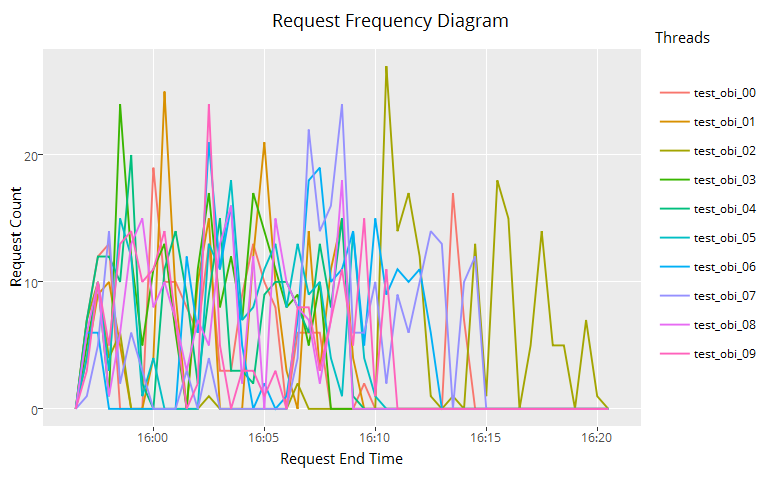Ggplot - Histogram (geom_histogram, geom_freqpoly)
About
Data Visualisation - Histogram (Frequency distribution)
Articles Related
Example
Numeric
library(ggplot2)
library(plotly)
histoTotalTime = ggplot(res_succes, aes(res_succes$TOTAL_TIME_SEC)) +
geom_histogram(bins = 100) +
labs(x = "Query Time (Sec)", y = "Number of Query")
ggplotly(histoTotalTime)
Time
end_ts_time=as.POSIXct(res_succes$END_TS, format="%Y-%m-%d %H:%M:%S", tz="UTC")
ggplotly(ggplot(res_succes, aes(x=end_ts_time, color=factor(res_succes$USER_NAME)) )
+ geom_freqpoly(binwidth = 30)
+ scale_x_datetime()
+ labs(title="Request Frequency Diagram", color="Threads", x="Request End Time", y="Request Count"))
Formula
Breaks definition
The below code handles outliers by:
- creating manually the breaks
- limiting the Cartesian coordinates (zooming)
## Create bin breaks
value_breaks = c( seq(10,120,by=10), max(res_succes$TOTAL_TIME_SEC))
## Labels
label_breaks = c(as.character(seq(10, 120, by=10)), "Max+")
ggplot(res_succes, aes(x=res_succes$TOTAL_TIME_SEC, fill = factor(res_succes$REPORT_TYPE))) +
geom_histogram(breaks=value_breaks) +
labs(x = "Total Time (min)", fill= "Report Type") +
coord_cartesian(xlim=c(10,130)) +
scale_x_continuous(breaks=value_breaks, labels=label_breaks)
